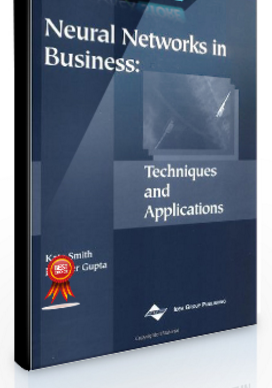
Kate Smith – Neural Networks in Business
Price: $25
Please contact us: – Email: Tradersoffer@gmail -Skype: [email protected]
Review
This book is the ultimate reference for neural networks in business. —
Mark Embrechts, Rensselaer Polytechnic Institute
From the Inside Flap
Business data is arguably the most important asset that an organization owns. Whether the data records sales figures for the last 5 years, the loyalty of customers, or information about the impact of previous business strategies, the potential for improving the business intelligence of the organization is clear. Most businesses are now storing huge volumes of data in data warehouses, realizing the value of this information. The process of converting the data into business intelligence however still remains somewhat a mystery to the broader business community.
Data mining techniques such as neural networks are able to model the relationships that exist in data collections, and can therefore be used for increasing business intelligence across a variety of business applications. Unfortunately the mathematical nature of neural networks has limited their adoption by the business community, although they have been successfully used for many engineering applications for decades.
This book aims to demystify neural network technology by taking a how-to approach through a series of case studies from different functional areas of business. Chapter 1 provides an introduction to the field of neural networks and describes how they can be used for prediction, classification, and segmentation problems across a wide variety of business areas. The two main types of neural networks are presented in this introductory chapter. The first is the multilayered feedforward neural network (MFNN) used for prediction problems such as stock market prediction and classification problems such as classifying bank loan applicants as good or bad credit risks. The second type of neural network is the self-organizing map (SOM) used for clustering data according to similarities, finding application in market segmentation for example. These two main neural network architectures have been used successfully for a wide range of business areas as described in chapter 1 including retail sales, marketing, risk assessment, accounting, financial trading, business management, and manufacturing.
The remainder of the book presents a series of case study chapters and is divided into sections based on the most common functional business areas: sales and marketing, risk assessment, and finance. Within each of these sections, the chapters use MFNN’s, SOM’s, and sometimes both neural network models to provide increased business intelligence…

